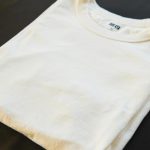When choosing between Pima and Supima sateen, you’ll find Supima cotton offers longer, stronger fibers grown exclusively in the U.S., giving you a softer, more durable fabric with enhanced luster and fewer pills. Pima cotton is still high-quality but slightly less resilient and usually more affordable. Supima’s sustainable farming and strict standards add ethical value to luxury. If you want to appreciate how these differences affect your bedding or apparel, keep exploring to uncover the full benefits.
Table of Contents
Key Takeaways
- Supima cotton fibers are longer (38-41 mm) than Pima’s (34-36 mm), resulting in stronger, smoother sateen fabric.
- Supima sateen has superior softness, durability, and resists pilling better than Pima sateen over time.
- Both Pima and Supima sateen fabrics have a silky sheen, but Supima offers a richer, more luxurious finish.
- Supima cotton is grown exclusively in the U.S. under strict environmental and ethical standards, unlike Pima grown elsewhere.
- Supima typically costs more but provides greater longevity and premium feel, while Pima offers quality at a lower price.
Origins and Cultivation of Pima and Supima Cotton
Although both Pima and Supima cotton come from the same species, their origins and cultivation methods set them apart.
When you look at Pima cotton, you’ll find it originally cultivated in the southwestern United States, as well as parts of Peru and Australia.
Supima cotton, however, is a trademarked variety grown exclusively in the U.S., mainly in California, Arizona, Texas, and New Mexico.
You’ll notice that Supima growers follow strict quality standards to maintain fiber integrity and sustainability.
While both require warm climates and well-drained soil, Supima cotton benefits from more rigorous farming practices, including controlled irrigation and pest management.
This attention to detail guarantees a consistently high-quality crop, distinguishing Supima as a premium variant of Pima cotton.
Fiber Length and Its Impact on Sateen Fabric Quality
The differences in cultivation between Pima and Supima cotton directly influence the fiber length, which plays a key role in the quality of sateen fabric. Supima cotton fibers are generally longer than Pima, allowing for smoother, stronger yarns. This length difference means Supima sateen often has fewer fiber ends exposed, resulting in less pilling and a more luxurious sheen. When you choose sateen fabric, fiber length impacts durability and the fabric’s ability to drape beautifully.
| Cotton Type | Average Fiber Length (mm) | Impact on Sateen Quality |
|---|---|---|
| Pima | 34-36 | Strong, smooth, good sheen |
| Supima | 38-41 | Extra strength, finer finish |
| Standard | 25-27 | More prone to pilling |
Softness, Durability, and Feel Comparison
When you compare Pima and Supima sateen, you’ll notice distinct differences in softness, durability, and overall feel.
Supima, grown exclusively in the U.S., features longer, finer fibers than standard Pima. This results in a fabric that feels exceptionally smooth and luxurious against your skin. You’ll find Supima sateen offers greater strength, resisting pilling and wear better over time.
Pima sateen is soft and comfortable but slightly less resilient, making it perfect for everyday use without sacrificing comfort.
Both fabrics have a silky sheen thanks to the sateen weave, but Supima’s superior fiber quality gives it a richer, more lustrous finish.
When you want sateen that combines plush softness with long-lasting durability, Supima is the premium choice you won’t regret.
Environmental and Ethical Considerations in Cotton Production
Choosing between Pima and Supima sateen isn’t just about softness and durability—you might also want to contemplate how the cotton is grown and sourced.
Supima cotton is exclusively grown in the U.S., where stricter environmental regulations often reduce pesticide use and promote water conservation. Pima cotton, while also high-quality, is grown in various countries with varying farming practices, so its environmental impact can differ greatly.
When you choose Supima, you’re likely supporting more transparent and ethical labor standards, thanks to better oversight. However, both types of cotton still require considerable water and resources to cultivate.
If sustainability matters to you, look for certifications like organic or Fair Trade, which can help guarantee that the cotton is produced with lower environmental impact and fair working conditions.
Price Points and Value for Luxury Bedding and Apparel
Luxury bedding and apparel often come with a higher price tag, but understanding the differences between Pima and Supima cotton can help you decide where your money is best spent.
Supima cotton, grown exclusively in the U.S., generally costs more due to its superior fiber length, strength, and softness. When you invest in Supima sateen, you’re paying for enhanced durability and a luxurious feel that lasts longer.
Pima cotton offers great quality at a slightly lower price, making it a smart choice if you want softness and strength without splurging.
Ultimately, both provide excellent value, but if you prioritize lasting luxury and premium feel, Supima is worth the extra cost. Your choice depends on balancing budget with the level of comfort and longevity you want.
Frequently Asked Questions
How Do Washing Instructions Differ for Pima Versus Supima Sateen?
Think of washing Pima and Supima sateen like handling delicate butterflies; you’ll want to use cold water and gentle cycles for both, avoid bleach, and tumble dry low to keep their softness fluttering beautifully.
Can Pima and Supima Cotton Sateen Be Blended With Other Fabrics?
Yes, you can blend Pima and Supima cotton sateen with other fabrics to enhance durability or texture. Just make sure to check care instructions since blends may require different washing and maintenance than pure cotton sateen.
What Are the Best Brands Specializing in Pima and Supima Sateen Products?
Imagine a treasure chest of softness—brands like Boll & Branch, Brooklinen, and Snowe guard it well. When you shop their pima and supima sateen, you unwrap luxury woven into every thread just for you.
How Does Sateen Weave Affect Breathability Compared to Other Weaves?
You’ll find sateen weave less breathable than plain weaves because its tight, glossy finish traps more heat and moisture. But it feels luxuriously smooth and soft, perfect for cozy bedding when breathability isn’t your top priority.
Are There Common Allergens Associated Specifically With Pima or Supima Cotton?
Imagine a gentle garden where few pests dare to tread; you won’t find common allergens lurking in Pima or Supima cotton. You’ll enjoy softness without sneezes, as these premium fibers resist typical irritants gracefully.
- Velvet Fabric for Winter: Warmth Properties & Seasonal Style Uses - June 22, 2025
- Assessing Velvet Fabric Quality: Key Markers for Durability & Luxury - June 22, 2025
- Tie-Dyeing Velvet Fabric: Unique Techniques for Vibrant Patterns - June 22, 2025







